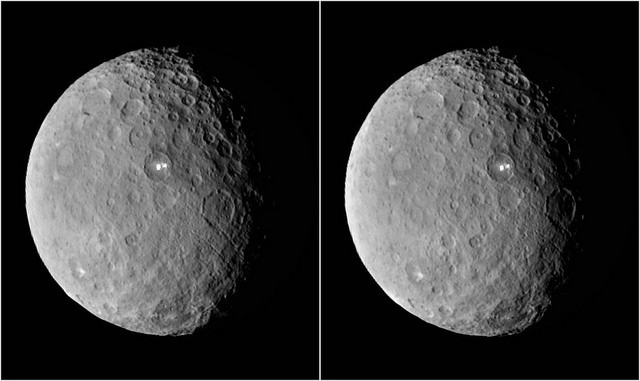They will be able to study the surface in even more detail very soon, and hopefully this data will shed more light on why things are not fitting their models:
Dawn is currently descending into an orbit much closer to Ceres’ surface, where it will take higher-resolution images that will reveal smaller craters.
But even those additional craters won’t fill in the missing 90 percent.
Geological activity, such as earthquakes and volcanoes, can erase the presence of craters.
The more likely culprit, according to Marchi, is ice. When ice is slightly warm, but not cold enough to melt, it can be a somewhat flexible material that can move and shift over time.
What do you think? Are either of the two explanations right? Or is there an unmentioned factor that may be responsible for the lack of craters like a mini atmosphere in the past?
thanks to space.com for the great info
thanks to Roger Harris for the pic
